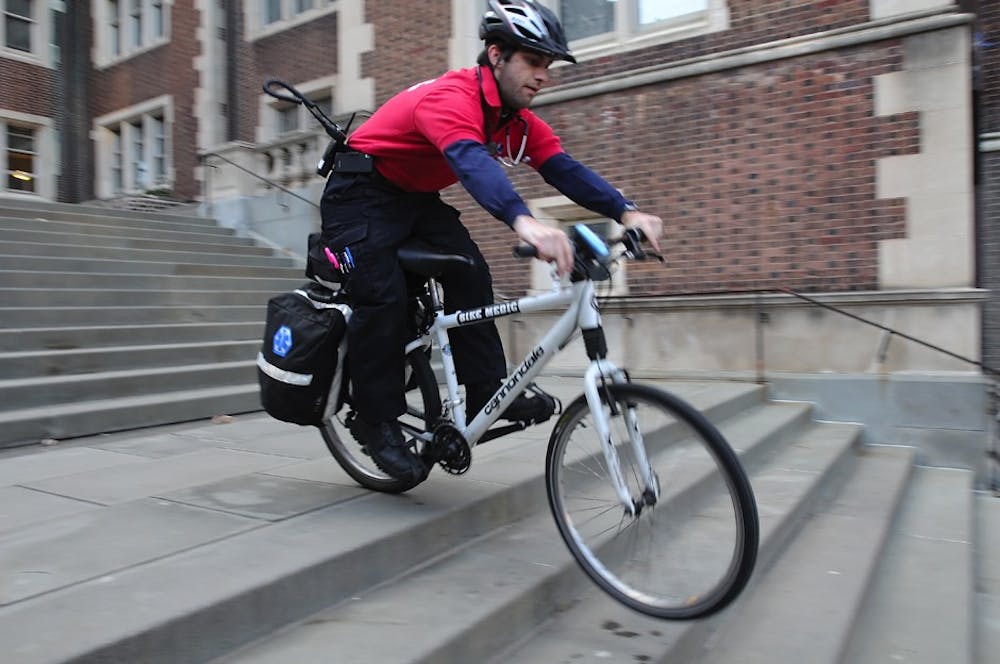As I lay on the floor, with four pairs of hands fervently taking my vitals, checking me for wounds and holding my head locked in place, I almost believed the story broadcast over the Medical Emergency Response Team’s radio.
“An 18-year-old girl has just been hit by a car on 40th just north of Walnut Street,” a professional voice relayed to MERT Chief of Operations and Wharton junior Will Doyle. In this mock-response simulation, I, the reporter, became the guinea pig.
At the start of her 5 p.m. shift, College junior Kendra Hypolite brought a plate of buttery chocolate chip cookies, hoping to provide her fellow MERT members with some sustenance as they began their 14-hour nightly wait.
It was Saturday. It would be a long night.
The four members on shift that evening donned matching fire hydrant-red T-shirts with EMS — Emergency Medical Services — ironed onto the back. Stethoscopes and radios completed the outfit. Despite their uniforms and propensity for tongue-twisting medical terms, it was clear that these crew members were “still students, even when on duty,” Doyle assured me.
But students like Doyle — an ex-firefighter and emergency medical technician in his hometown — are the ones Penn students depend on. They have been through over 140 hours of training to become EMTs, and countless more as MERT members.
Riding alongside me and carrying 40 pounds of equipment on his back, Doyle explained the rigorous bike training that allowed MERT members to respond to emergencies in under five minutes. “We even had to learn to bike down stairs,” he mentioned casually and proceeded to demonstrate, sailing effortlessly down the lower Quad’s double-decker flights.
With the expertise of a seasoned medic, Nursing junior Alexandra Tejan identified a number of MERT’s curious life-saving instruments — a bag valve mask, oxygen tank, splints and cervical collar emerged from the depths of a Mary Poppins-style saddlebag.
As the guinea pig, distracted by Doyle’s reassuring voice, I barely noticed College junior Julia Lakin holding my head in the “c spine” position, as the team worked at whirlwind speed. The team communicated with a remarkable lack of panic as this human engine churned with harmonious precision. After they had thoroughly assessed my current state, the team prepared for a tactful maneuver: to place my body onto the orange stretcher without risk to my “fragile” condition.
I felt weightless as the team rolled me onto my side, slipping the board beneath me, with seeming ease. In an actual emergency, the team would then have placed me in an ambulance and sent me securely on my way. Mission accomplished.
Although “the Penn community really embraces MERT,” according to Tejan, many students fail to comprehend just how vital the team is. MERT’s responsibility is to provide pre-hospital treatment, as they work in conjunction with Penn Police and the Philadelphia Fire Department. Without a qualified EMT nursing your wounds and “calming you down,” the wait can seem painfully endless, Lakin said.
Having finished my interview, I left the team around that almost empty plate of cookies. In the next few hours they might doze a bit, play video games or write a paper. But if the radio sounds, they’ll be off into the night.



